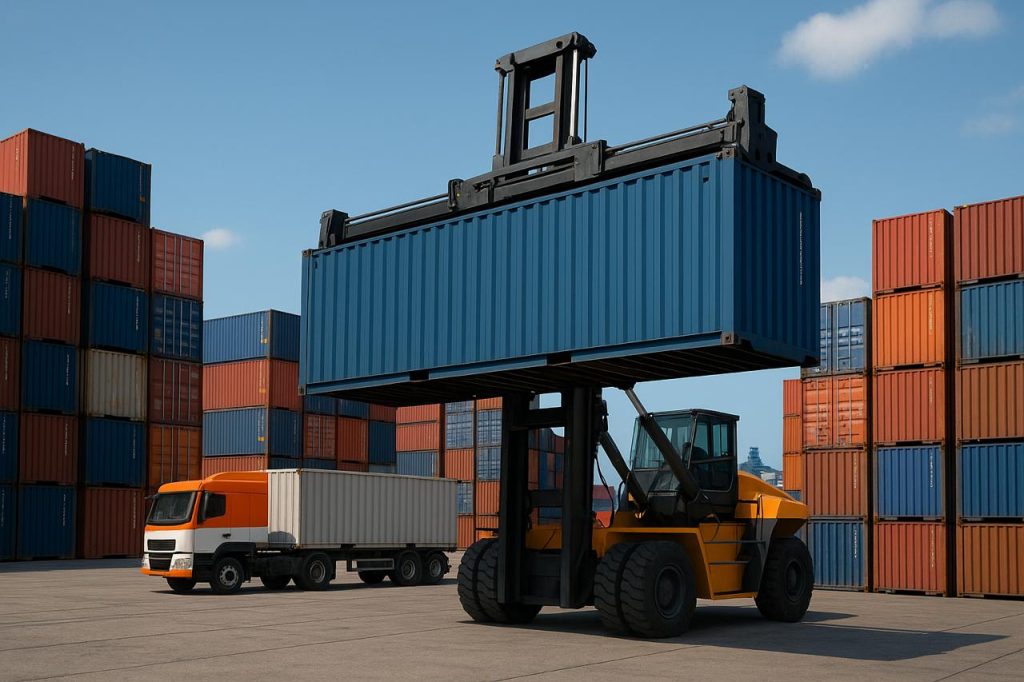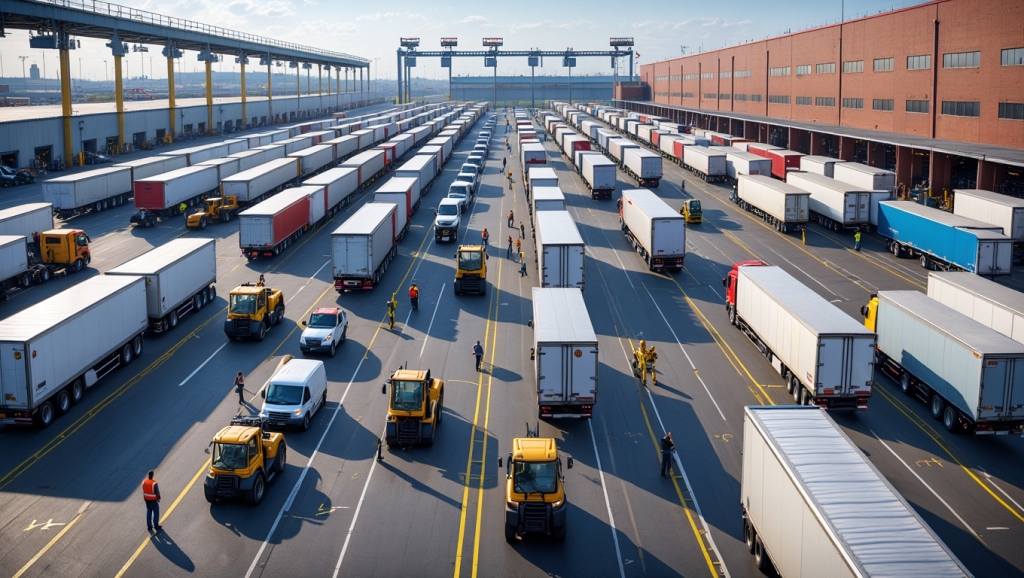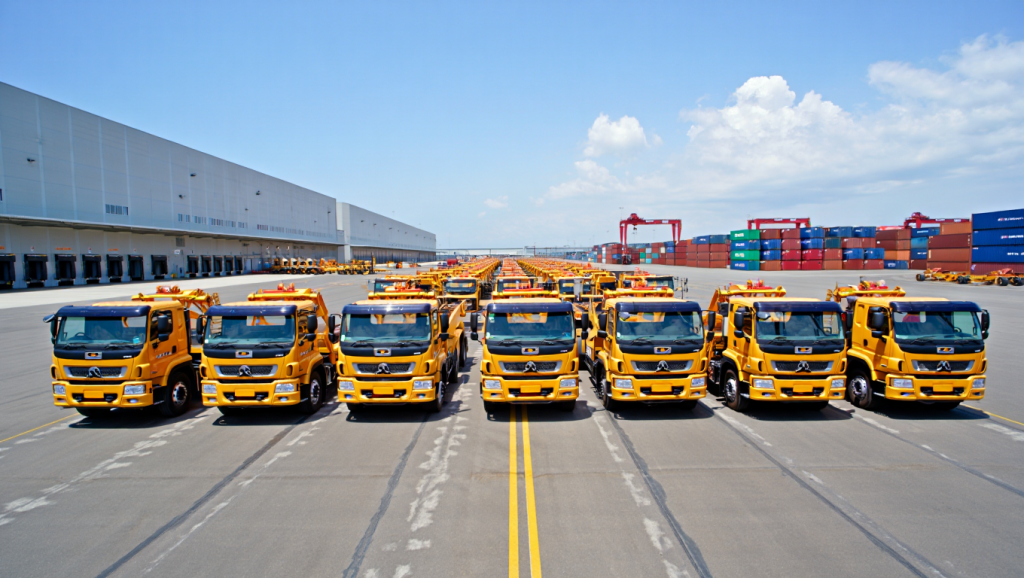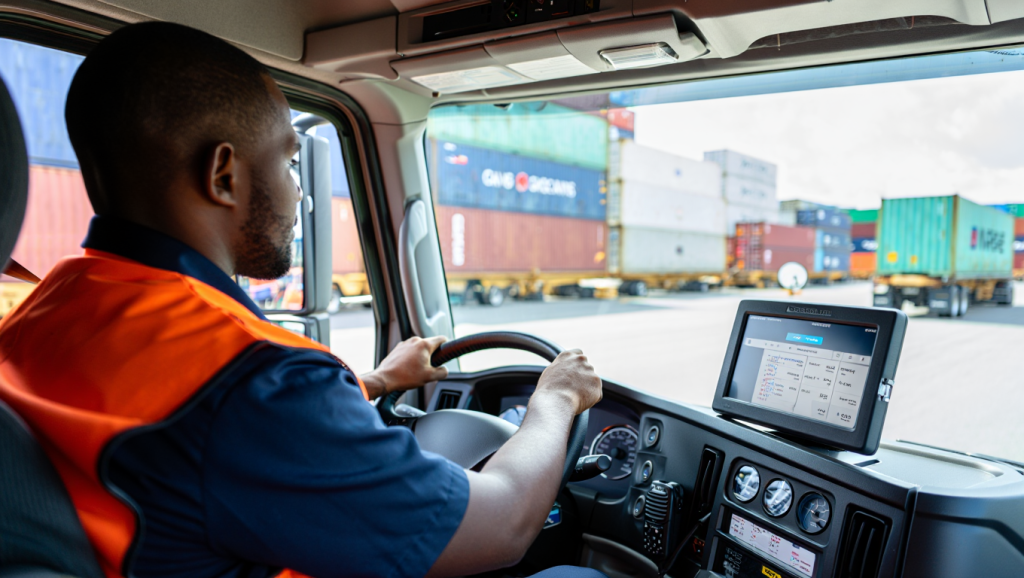Running port or terminal operations can feel like an endless puzzle, especially when containers begin piling up with seemingly no system in place. From misplaced containers to blocked loading zones and poor tracking, container yard chaos can slow down everything. When you’re dealing with high-volume shipments, such delays can cost you time, money, and customer trust.
This is where container yard management comes in, enabling you to store, track, and efficiently move containers in and out effectively. And if you are on the fence about whether such systems are worth your investment, remember that global trade is not slowing down, and the ports handling it are getting busier. The global container yard services market is projected to reach $71.3 billion by 2030, underscoring the growing importance of this sector.
In this blog, we will explain what container yard management is, how it works, and why it forms an integral part of modern-day logistics.
Understanding Container Yard Management
Operating a container yard (CY) is a highly critical component of port and terminal operations. A container yard is a dedicated space that accommodates the storage of shipping containers, either prior to loading onto a ship or after they have been discharged.
The containers may be full of merchandise or empty, waiting for their next duty. It can be compared to a container parking lot that maintains everything organized.
Container yard management refers to the process by which operations within this yard are carried out. It involves receiving the containers upon arrival, placing them in their designated locations, monitoring their condition, and dispatching them when necessary.
It also makes sure that the containers are not misplaced or lost and that they are transported in a safe manner. The machinery and personnel used in the yard make it all systematic; hence, goods move into the next step without interruption. Failure to manage the container yard properly will result in wasted time, ineffective space utilization, and inefficient functioning.
Whether a large port or a small terminal, container yard management is crucial to ensuring the overall logistics process runs smoothly.
What Is A Container Yard Management System (CYMS)?
A container yard management system (CYMS) is computer software that helps coordinate all activities on a container yard on a daily basis. It tracks containers—where they are stored, when they arrive, and when they are due to depart. This system uses computers for paperwork, making the activity quicker, more precise, and less stressful for yard staff.
It’s helpful in busy container terminals where thousands of containers arrive and depart daily. With CYMS, you can always view the exact location and status of every container in real time.
Key Components Of Container Yard Management System
- Yard Management Software: Helps plan, organize, and control all yard operations.
- RFID Scanners: Used to quickly scan and identify containers without manual data entry.
- GPS And Sensors: Track the live location of containers and vehicles within the yard.
- Gate Control Systems: Manage the check-in and check-out process for trucks and containers.
- Reporting Tools: Show daily activities and performance trends, and help spot issues early.
- Mobile Devices: Help yard workers update and receive information while on the move.
- CCTV and Security Cameras: Provide real-time video monitoring for safety and supervision.
Why You Should Use A Container Yard Management System
Using a CYMS helps reduce container delays, improves container visibility, and lowers human errors. It makes the yard more organized, reduces waiting time for trucks, and helps you handle more containers without needing additional space or staff.
Note: A 2024 study by IDENTEC SOLUTIONS shows that shifting from manual to digital yard management in container terminals can improve container chassis operations efficiency by up to 50%.
Challenges In Container And Intermodal Yard Operations
Container yard management, particularly intermodal container management, is associated with several challenges that can impact speed, safety, and efficiency.
Container Congestion
When too many containers arrive at once or are not cleared on schedule, the yard becomes congested. This makes it difficult to mobilize equipment and delays the time spent searching for or transferring containers.
Intermodal Yards’ Lack Of Coordination
During intermodal yard management, containers are moved on ships, trains, and trucks. In the absence of properly coordinated schedules, containers may be delayed or stuck, awaiting follow-up transportation to occur.
Manual Tracking And Paperwork
Manual processes in data management are still widely adopted in many organizations, including the use of clipboards or spreadsheets. This introduces additional human error and slows down the entire process, particularly in high-volume yards.
Poor Space Utilization
Without an effective stacking and layout strategy, containers are placed haphazardly. It results in delays while attempting to reach particular containers and wastes precious yard space.
No Real-Time Visibility
If yard managers lack visibility into the real-time status or location of containers, decisions are made based on estimates, leading to confusion among rail, road, and sea teams.
Communication Gaps Between Teams
Drivers, crane operators, and supervisors tend to be limited in their updates. Without a central platform, there is a potential for miscommunication that can cause missed pickups or incorrect container movements.
These issues underscore that yards, particularly intermodal yards, necessitate a digital and innovative solution to streamline operations and eliminate costly delays.
Choosing The Right Container Or Intermodal Yard Management System
Not all yard management systems are suitable for every company. If you need smoother operations, fewer mistakes, and quicker container movement, selecting the correct system matters immensely.
Seek Real-Time Tracking
A solid system should allow you to view the location of each container in the yard at any time. This prevents delays and simplifies planning.
Easy WMS And TMS Integration
Your yard system needs to integrate seamlessly with your Warehouse Management System (WMS) and Transportation Management System (TMS). This allows the correct data to be exchanged between storage, transportation, and the yard.
Supports Intermodal Operations
If your yard transacts containers moving by road, rail, and sea, the system should be able to manage intermodal yard management. It should be able to handle the scheduling of all these modes.
Mobile And User-Friendly
The system should allow workers to operate using mobile devices such as tablets. An easy-to-use and intuitive interface enables your employees to work more efficiently with fewer errors.
Solid Support And Training
Even with the best software, it won’t matter if your staff isn’t trained to use it. Look for a provider that provides solid support and in-person training.
This is why logistic leaders, including Zelo Express, invest in high-tech container and intermodal yard management software. Automating its complicated operations through the use of smart tools that are relevant to current operations in the yard has ensured Zelo Express has better container tracking and coordination as well as faster turnaround time, which has led to happy customers and shipments flow.
Final Thoughts
Container yards may not seem special, but they play a crucial role in managing the logistics chain. Without proper administration, they can become chaotic, overused, and economically detrimental to an organization in short order. A highly designed CYMS will go far in solving these problems by providing visibility, improving the tracking of container movement, reducing the likelihood of human input errors, and introducing automation, all aimed at facilitating smooth day-to-day deliveries.
The need for an innovative system becomes even more critical to the yards dealing with both standard and intermodal traffic. If you’re looking to improve your container or intermodal yard operations, investing in the right system is a step in the right direction. Contact us to discover how improved yard management can aid your logistics success.




